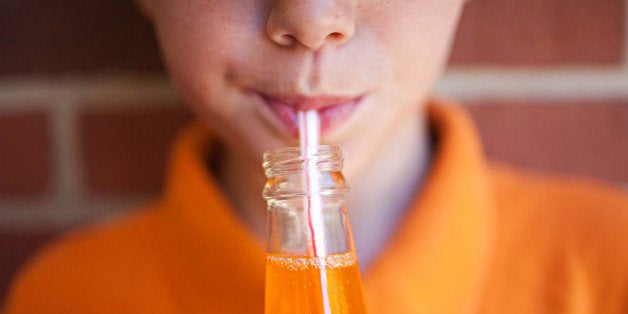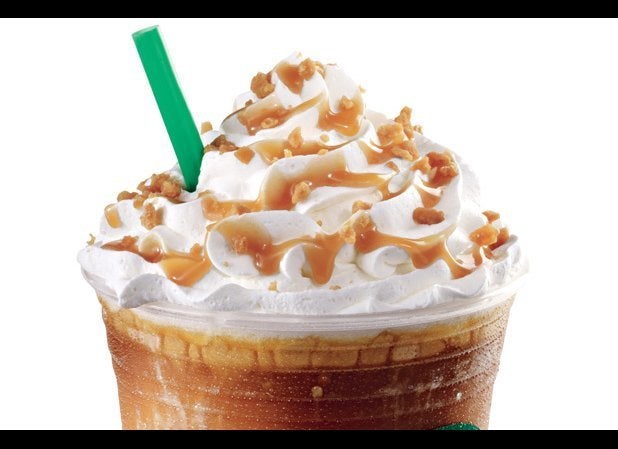
Ventura County youths cut their daily reliance on Coke, SunnyD and other sugary drinks at a greater pace than anywhere else in California, according to a study released Thursday.
The rate at which children ages 2 to 17 in the county gulped down at least one soda or sugar-loaded beverage a day fell 37 percent over more than six years, said the report from the UCLA Center for Health Policy Research and the California Center for Public Health Advocacy.
Across the state, the rate fell 11 percent. Yuba County's 32 percent decrease in downing the drinks ranked as California's second-highest.
Of the state's 15 largest counties, Ventura County was the only one where a smaller percentage of adolescents ages 12-17 drank soda every day in 2011 and 2012 than they did in 2005 and 2007.
Health advocates said the figures validate local efforts in pushing kids away from drinks they say pour into nationwide crises of childhood obesity and diabetes.
"That's wonderful," said Dr. Heather Nichols of Coastal Pediatrics, who helped start a Si Se Puede program that fights obesity. "A child's risk of becoming obese increases by 60 percent with each soda they drink daily."
Called "Still Bubbling Over," the study is based on data collected from the California Health Interview Surveys that reach regularly into 40,000 California households. Surveys from 2005 and 2007 were compared to data collected in 2010 and 2011.
Statewide, soda and sugary drink consumption fell among younger kids in surveys but rose among adolescents. The study said 65 percent of children ages 12 to 17 drank at least one soda or sugary drink a day in the newer surveys.
In Ventura County, 52 percent of the adolescents said they drank at least a soda a day in the most recent survey, but that rate reflected a 16 percent decrease over data from several years earlier.
"That says to me something right is happening in Ventura County," said Harold Goldstein, executive director of the California Center for Public Health Advocacy. But he also noted that more than half of the county adolescents in the survey still have a daily habit.
"A lot more right has to happen," he said.
The numbers may reflect a blizzard of programs in the county that target nutrition. The Ventura County Public Health Department is leading a "Rethink Your Drink" campaign that sends its message through the Boys & Girls Club, the Oxnard Public Library, FOOD Share, a Medi-Cal health insurance system and a long list of other partners across the county.
The efforts focus on the health consequences and choices, said Selfa Saucedo, who manages health education programs for Public Health.
"Frankly, just having water available at the home and at events is a real change in culture, but it's being done," she said.
A partnership of 90 private organizations, public entities and individuals propels a Healthy Ventura County agenda revolving around active living and healthy eating. A Moorpark Unified School District program funded by a federal grant pushes elementary school kids not to drink any sugary beverages.
Other observers point to laws that ban schools from selling sodas and programs in which 16 teaspoons of sugar are poured in a glass to show kids the contents of one 20-ounce soda.
At a Ventura food court, 18-year-old Jasmine Dominguez and her mother, Melissa Spruiell split a 30-ounce Fanta soft drink they bought for $1 at McDonalds. The teen, a Ventura College student into kickboxing, has cut back to a soda every other day.
"I don't want to get sick," she said. "I don't want to get diabetes."
The woman eating Subway sandwiches with her daughter at the food court isn't sure she believes the trend. But her three kids, ages 2, 4 and 10, are allowed sodas only on rare occasions.
Students at the Oak Park Unified School District can't buy sodas or beverages like Gatorade at school. The schools don't serve beef, pork or lamb and provide two days of meatless meals each week.
Still, Superintendent Tony Knight was surprised to hear the study's conclusion that students may be following at least some of the advice.
"It's such a limited thing," he said of the reach of school initiatives. "We don't sell sodas at school, but when they go home, they drink it."
According to the new report, 41 percent of kids ages 2-17 said they drink at least soda a day in the most recent survey. In nine California counties, more than 50 percent of the kids 2-17 drank at least one sugary drink a day. And while Ventura County had the greatest rate of reduction, the lowest rate of consumption was in San Francisco County.
There, about 21 percent of the kids ages 2-17 said they drank a soda a day or more in surveys conducted from 2009 to 2012.
Perhaps most alarming is the increase in soda drinking as kids get older. More than half of the adolescents in all of the state's 15 largest counties said they drank at least one sugary beverage a day in the more recent surveys.
Study authors said the numbers may reflect how parents have less control over their kids as they become teens. They also cited massive soda industry marketing.
They said the adolescent surge in soda underscores the need to find ways to offset marketing, make water available instead of soda, and keep educating kids and parents.
"We still have a ways to go," said Sue Babey, report co-author and senior research scientist at UCLA.
(c)2013 Ventura County Star (Camarillo, Calif.)
Visit Ventura County Star (Camarillo, Calif.) at www.vcstar.com
Distributed by MCT Information Services
